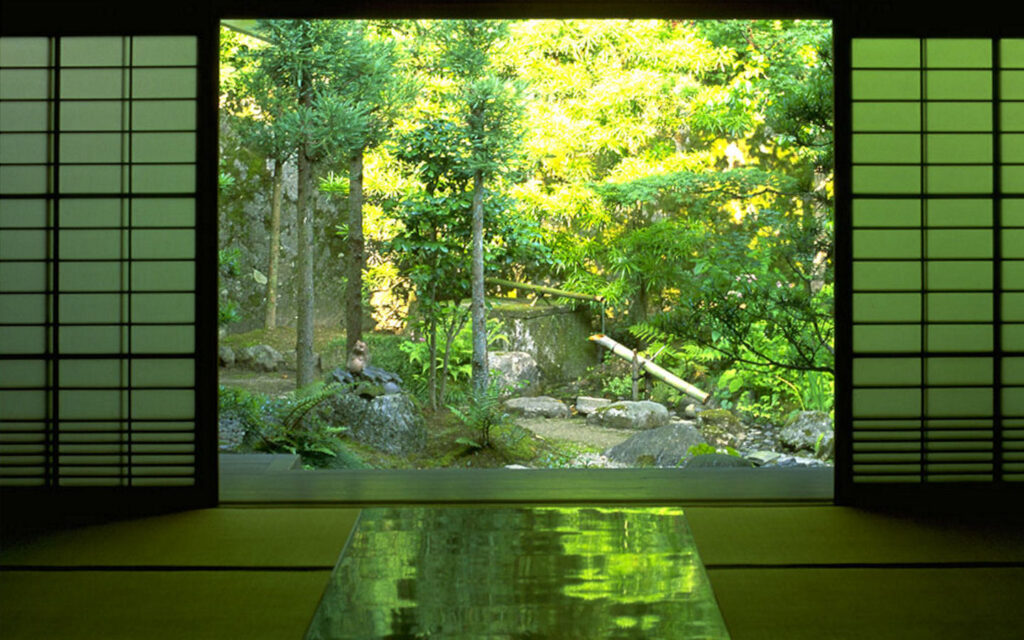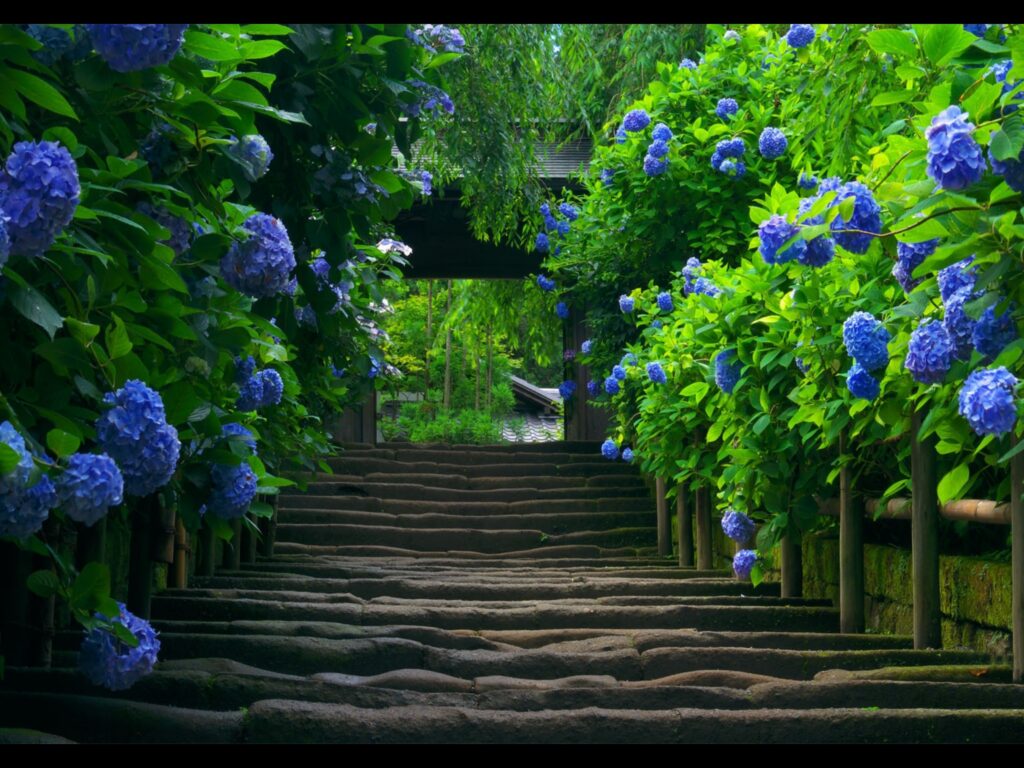
From the Hanging Gardens of Babylon and Frank Lloyd Wright’s Fallingwater House to Suzhou gardens and Japanese Zen gardens, I’ve been drawn to this architectural design for years. I had not been able to articulate this concept of incorporating natural environment with our living space until this year. Socially distancing in my comfort zone and retrospecting, I’ve finally learned that its name is called biophilic design.
Biophilic is the adjective of biophilia, a term originated from The Anatomy of Human Destructiveness (1973) by German-born American psychoanalyst Erich Fromm. Biophilia, literally, bio- means “love of life” and –philia, means “love for humanity and nature, and independence and freedom.” If we look at its Greek roots, “biophilia” literally means “love of living things.” The term was extended by American biologist Edward O. Wilson in Biophilia (1984) to mean “the rich, natural pleasure that comes from being surrounded by living organisms.”

Do you know there are 50 Eskimo words for “snow”? To name just two: “aqilokoq” is to describe the frozen landscape with “softly falling snow,” and “piegnartoq” is for “the snow that is good for driving sled.” In 2014, Terrapin Bright Green, an environmental consulting firm, published a paper titled “14 Patterns of Biophilic Design.” to define aspects of nature that most impact our satisfaction with the built environment. The 14 patterns of biophilic design akin to the 50 Eskimo words for “snow,” bringing aesthetic creators greater clarity to the nuances of design opportunities, including the roots of the science behind each pattern, then metrics, strategies and considerations for how to use each pattern. Of course, the paper is also a gem to this amateur linguist who is often mesmerized by les bons mots, the good words.
Residing far from East Asia, I constantly think of the familiar scenes which now only can be found in films and magazines in which porcelain fish bowls displayed in the courtyard, bonsai in Japanese homes, and shady Chinese banyan trees forming a canopy in an old neighborhood in Guangzhou. We don’t need to go too far. Nature is around us, and we are part of nature. If you care for discovering nature around you, you might notice sound as well. My biophilic rhapsody is not complete without sound. Or shall I say the sound of nature?
I’ve found a recording created by George Hempton, founder of the independent research project One Square Inch of Silence. As Hempton said, “Silence is not the absence of something, but the presence of everything.” Indeed, especially in the year of 2021, perhaps we will need more of tranquility from nature to heal our mind, heart and soul. For that, I will continue to discover the sound of linguistics in this column next year, coupled with my biophilic rhapsody for healing. This is only a sampler. Check out the video for Icelandic musician Björk’s interview about her journey to discover music and biophilia. Make sure to listen to the introduction narrated by our favorite natural historian David Attenborough. Björk’s project reminded me of a recording of pure music translated by scientists from coronavirus protein structure early this year. Today’s technology is making nature and music possible to soothe us without our traveling to discover them in the wild.
Listen. Learn. And Create.
I’ll invite you to come back to this essay by the end of 2021 to see if you’ve grown to be more biophilic and innovative. This will be the theme throughout my advocacy in 2021. Perhaps a moment of silence will calm the noises in our heads, a forest of birds’ chirping will lift up our sorrow, and a fountain of frogs’ croaking will add joy to our boring life. Japanese “forest bathing (森林浴)” or shinrin–yoku (しんりんよく) , is the perfect interpretation of biophilia. The magic behind “forest bathing” boils down to the naturally produced allelochemical substances known as phytoncides. They help ward off pesky insects and slow the growth of fungi and bacteria. When humans are exposed to phytoncides, these chemicals are scientifically proven to lower blood pressure, relieve stress and boost the growth of cancer-fighting white blood cells. If you’d like to learn the science of “forest bathing,” follow Dr. Qing Li, author of Forest Bathing: How Trees Can Help You Find Health and Happiness (2018). Now you know why I’m a tree hugger. I’m trying to be a vocal one.
Forest can cleanse our body and mind as if a soulmate will listen to you when you are at a loss. If you are willing to talk to nature, the nature will talk back to you. That explains why when we travel to a foreign destination, nature always evokes our senses. A little bit of biophilia in our life will harmonize relationships and perhaps, only a wild guess, we can rebuild trust in an age of disinformation with the help of biophilic design.
In closing, let us immerse ourselves in the words of Ralph Waldo Emerson from Nature (1836). Let us examine human’s biological need to connect with nature in this timely and timeless biophilic rhapsody.
“To go into solitude, a man needs to retire as much from his chamber as from society. I am not a solitary whilst I read and write, though nobody is with me. But if a man would be alone, let him look at the stars. The rays that come from those heavenly worlds, will separate between him and what he touches. One might think the atmosphere was made transparent with this design, to give man, in the heavenly bodies, the perpetual presence of the sublime. . . The stars awaken a certain reverence, because though always present, they are inaccessible; but all natural objects make a kindred impression, when the mind is open to their influence. Nature never wears a mean appearance. Neither does the wisest man extort her secret, and lose his curiosity by finding out all her perfection. Nature never became a toy to a wise spirit. The flowers, the animals, the mountains, reflected the wisdom of his best hour, as much as they had delighted the simplicity of his childhood.”

